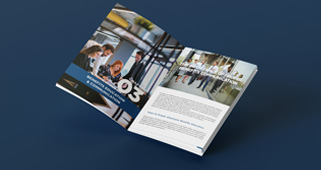The landscape of human resources (HR) is constantly evolving, influenced by a myriad of factors including technological advancements, regulatory changes, socio-economic shifts, and emerging workplace trends. As we navigate through 2024 and prepare for 2025, HR professionals must be adept at identifying and mitigating potential risks that could impact their organizations. This blog explores the potential HR risks on the horizon and offers strategies to address them effectively.
1. Technological Disruption and Cybersecurity Threats
Risks:
The rapid adoption of artificial intelligence (AI), machine learning, and other advanced technologies is transforming the workplace. While these technologies offer numerous benefits, they also pose significant risks, including job displacement, skill mismatches, and cybersecurity threats.
Mitigation Strategies:
- Upskilling and Reskilling: Invest in continuous learning and development programs to ensure employees’ skills remain relevant. Encourage a culture of lifelong learning.
- Cybersecurity Training: Implement robust cybersecurity training programs to educate employees about potential threats and best practices for maintaining security.
- Ethical AI Practices: Develop and enforce guidelines for the ethical use of AI and other technologies to mitigate risks associated with bias and privacy concerns.
2. Regulatory Changes and Compliance Issues
Risks:
HR professionals must stay abreast of changing labor laws and regulations. Non-compliance can result in legal penalties, financial losses, and damage to the organization’s reputation.
Mitigation Strategies:
- Regular Audits: Conduct regular compliance audits to ensure all HR practices adhere to current laws and regulations.
- Stay Informed: Subscribe to industry publications and participate in HR forums and networks to stay updated on regulatory changes.
- Legal Consultation: Maintain a relationship with legal experts who can provide guidance on complex compliance issues.
3. Diversity, Equity, and Inclusion (DEI) Challenges
Risks:
Promoting diversity, equity, and inclusion is more critical than ever. However, organizations may face challenges in creating truly inclusive environments, which can lead to employee dissatisfaction and high turnover rates.
Mitigation Strategies:
- DEI Training: Offer comprehensive DEI training programs for all employees, including leadership, to foster an inclusive culture.
- Inclusive Policies: Review and update HR policies to ensure they support diversity and inclusion. This includes hiring practices, promotion criteria, and employee resource groups.
- Regular Assessments: Use surveys and feedback mechanisms to assess the effectiveness of DEI initiatives and make necessary adjustments.
4. Remote Work and Hybrid Models
Risks:
The shift to remote and hybrid work models, accelerated by the COVID-19 pandemic, presents challenges related to employee engagement, productivity, and mental health.
Mitigation Strategies:
- Flexible Policies: Develop flexible work policies that accommodate different working styles and personal circumstances.
- Communication Tools: Invest in robust communication and collaboration tools to facilitate effective remote work.
- Wellness Programs: Implement wellness programs that address mental health and work-life balance issues, providing support for remote employees.
5. Talent Acquisition and Retention
Risks:
The war for talent is intensifying, with organizations vying for skilled professionals. High turnover rates and the inability to attract top talent can hinder organizational growth.
Mitigation Strategies:
- Employer Branding: Strengthen employer branding to attract top talent. Highlight company culture, values, and career development opportunities.
- Competitive Compensation: Offer competitive salaries and benefits packages to attract and retain employees.
- Career Development: Provide clear career progression paths and professional development opportunities to keep employees engaged and motivated.
6. Employee Engagement and Morale
Risks:
Low employee engagement and morale can lead to decreased productivity, higher absenteeism, and increased turnover rates.
Mitigation Strategies:
- Recognition Programs: Implement employee recognition programs to celebrate achievements and contributions.
- Feedback Mechanisms: Create channels for regular feedback and ensure that employees feel heard and valued.
- Team Building: Organize team-building activities to strengthen relationships and foster a sense of community.
7. Mental Health and Well-being
Risks:
Mental health issues in the workplace are becoming more prevalent, impacting employee performance and overall organizational health.
Mitigation Strategies:
- Mental Health Resources: Provide access to mental health resources, including counseling services and wellness programs.
- Open Dialogue: Encourage an open dialogue about mental health to reduce stigma and promote a supportive environment.
- Work-Life Balance: Promote work-life balance through flexible work schedules and policies that prioritize employee well-being.
8. Succession Planning and Leadership Development
Risks:
Failing to prepare for leadership transitions can create gaps in critical roles, disrupting operations and hindering strategic initiatives.
Mitigation Strategies:
- Succession Plans: Develop and maintain robust succession plans for key roles within the organization.
- Leadership Training: Invest in leadership development programs to cultivate a pipeline of future leaders.
- Mentorship Programs: Implement mentorship programs to transfer knowledge and skills from experienced leaders to emerging talent.
9. Cultural Integration in Mergers and Acquisitions
Risks:
Mergers and acquisitions (M&A) can lead to cultural clashes, employee uncertainty, and decreased morale if not managed effectively.
Mitigation Strategies:
- Cultural Assessment: Conduct a thorough cultural assessment during the due diligence phase of M&A activities.
- Change Management: Implement a structured change management process to address cultural integration and employee concerns.
- Communication: Maintain transparent communication with employees throughout the M&A process to manage expectations and reduce anxiety.
10. Ethical and Social Responsibility
Risks:
Organizations are increasingly held accountable for their ethical conduct and social responsibility. Failure to meet these expectations can damage reputation and stakeholder trust.
Mitigation Strategies:
- Ethical Policies: Develop and enforce strong ethical policies and codes of conduct.
- Corporate Social Responsibility (CSR): Engage in CSR initiatives that align with company values and contribute positively to society.
- Stakeholder Engagement: Actively engage with stakeholders, including employees, customers, and the community, to understand their concerns and expectations.
As we move through 2024 and into 2025, HR professionals must navigate a complex landscape of potential risks. By proactively addressing these challenges through strategic planning, continuous learning, and a commitment to employee well-being, organizations can create resilient, adaptive workplaces that thrive in the face of change.
Embracing technology responsibly, fostering an inclusive culture, and prioritizing mental health are just a few ways HR can lead their organizations to success. By staying informed and agile, HR professionals can turn potential risks into opportunities for growth and innovation, ensuring a prosperous future for their organizations and employees alike. Let Benely and their HR team help you mitigate these risk factors in 2024 and beyond.






